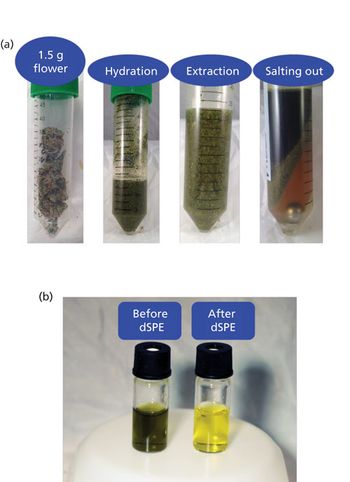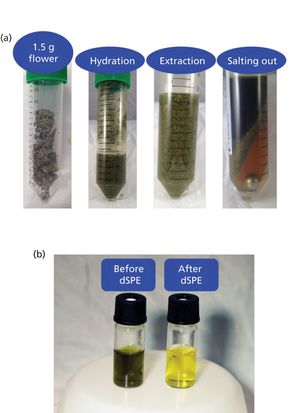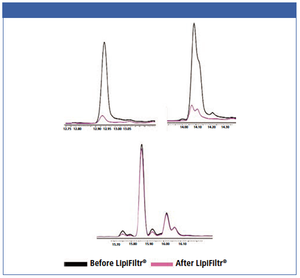
This application note outlines the performance benefits achieved with UCT’s LipiFiltr® cleanup cartridge for the analysis of pesticides in oil-based cannabis products using LC–MS/MS analysis.

This application note outlines the performance benefits achieved with UCT’s LipiFiltr® cleanup cartridge for the analysis of pesticides in oil-based cannabis products using LC–MS/MS analysis.

While systems for growing, production and sale of cannabis and cannabis related products are well established, regulation and enforcement of quality and safety testing have lagged behind. However, state governments and private labs are focusing on product safety testing with special emphasis on pesticide analysis. This is partially the result of various product recalls, media attention and concern from patient advocacy groups. We evaluated a modified QuEChERS LC-MS/MS method for analysis of multiresidue pesticides. The AOAC QuEChERS method was used for a reduced 1.5 g amount of plant material and processed with a universal dSPE formulation. LC-MS/MS analysis used constant polarity switching ESI and monitored at least two transitions per analyte. Matrix-matched calibration was used for quantitation and both method and instrument internal standards were used. Analyte recovery validation was performed according to FDA guidelines by testing three matrices at three fortification levels in triplicate for over 200 pesticides. For the large majority of pesticides, in all three matrices and at all three fortification levels, recovery was between 70-120%.

The authors evaluate a method for detecting pesticide residues in dandelion root powder.

The recent establishment of a 1 μg/g safety threshold for melamine in infant foods has led to an immediate need for more sensitive methods. Here we established GC–MS conditions for highly reproducible analyses and evaluated the effectiveness of both solvent-based and matrix-matched standards. Using this method, melamine and cyanuric acid were reliably detected at and below 1 μg/g in infant formula.

Published: November 1st 2010 | Updated:

Published: February 1st 2009 | Updated:

Published: May 1st 2017 | Updated:

Published: December 1st 2018 | Updated: